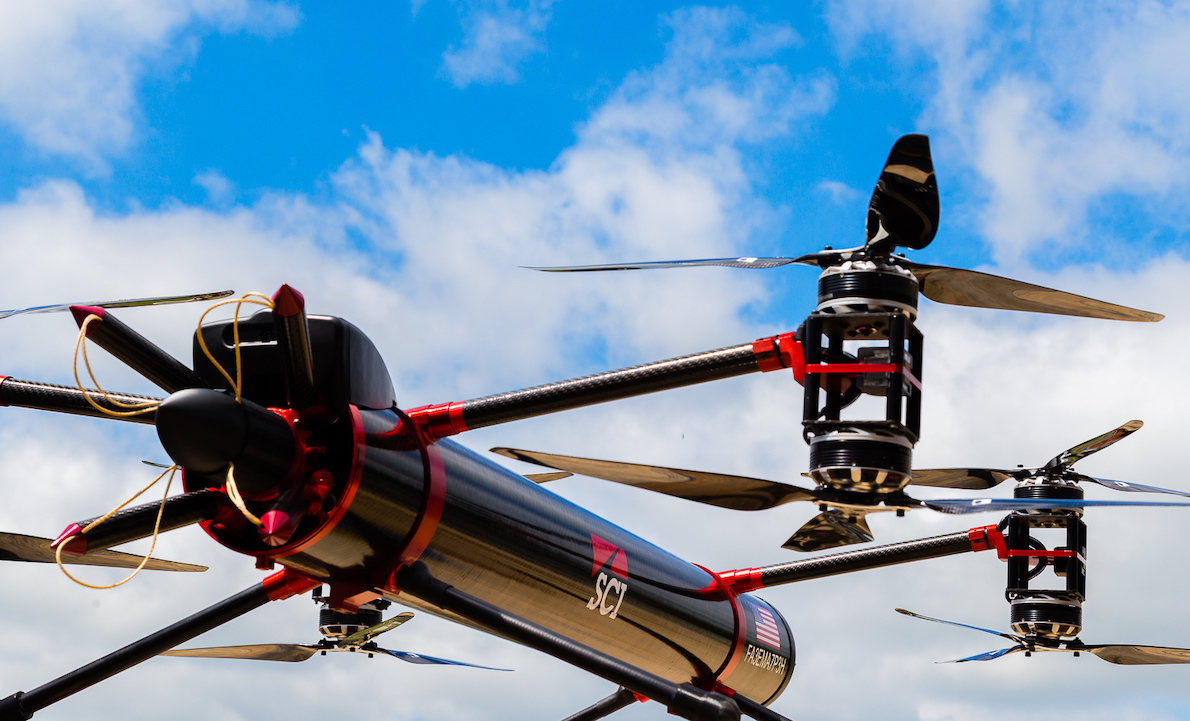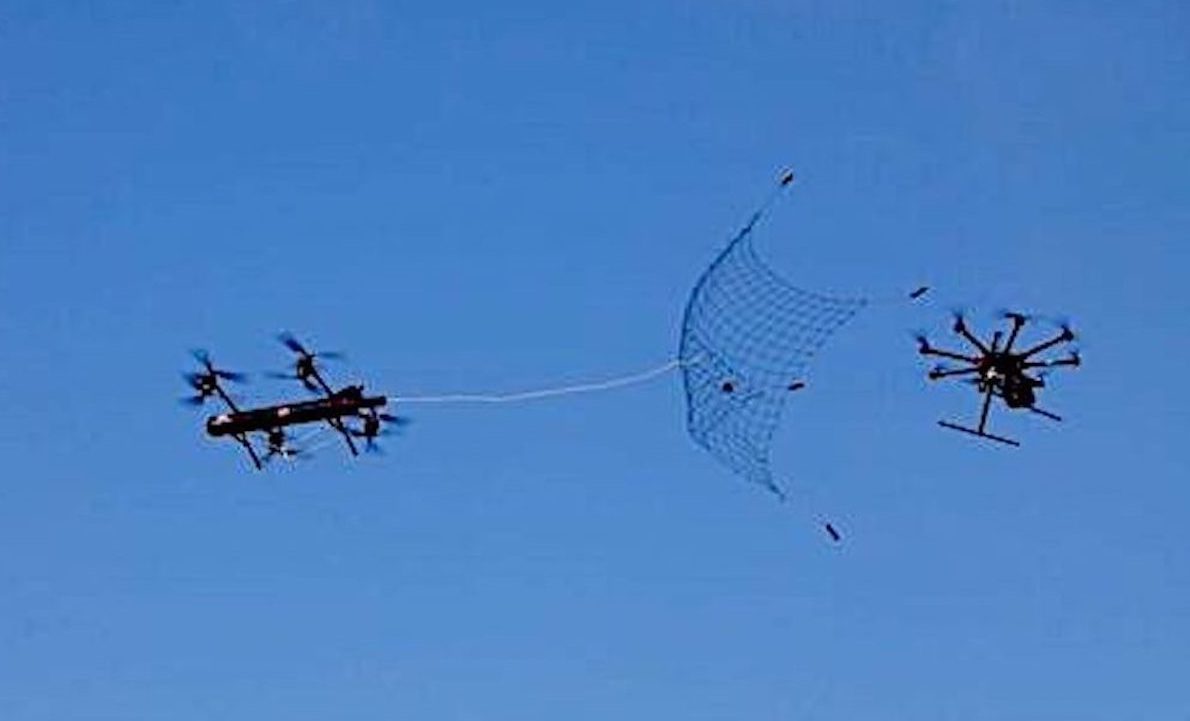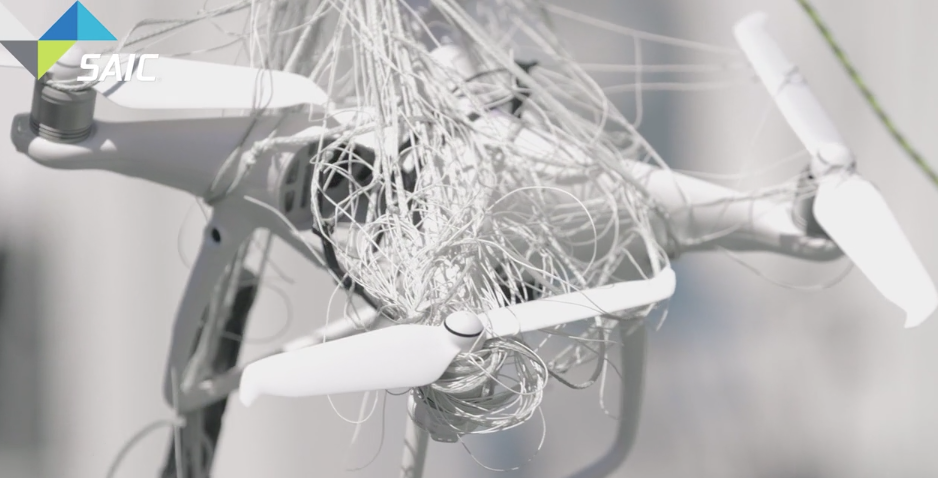Pentagon’s AeroGuard: the New UAS to “Catch in the Net” the Kamikaze Drones used in Ukraine War

by Defense One – All links to Gospa News articles have been added aftermath
In late September, an NFL game between the Atlanta Falcons and Seattle Seahawks was delayed for about eight minutes while a small drone hovered over Lumen Field. One day earlier, the same thing happened nearby during a University of Washington football game.
Neither incident did more than disrupt a game, but both underlined security concerns about cheap, easy-to-use drones. Some 5,500 miles from Seattle, Russia and Ukraine are increasingly using kamikaze drones on the battlefield.
The proliferation of drones has prompted numerous companies to come up with ways to defeat them. At last month’s Association of the U.S. Army’s annual meeting in Washington, a bunch of new counter-drone tech was on display.
In recent years, the Pentagon’s counter-drone efforts have been piecemeal. In January, U.S. Special Operations Command awarded Anduril a contract that could be worth up to $1 billion; In October, the Army’s Counter Small Unmanned Aircraft Systems office approved counter-drone tech made by SAIC, Anduril, and Black Sage Technologies to protect military bases. This month, the U.S. Marine Corps asked companies to give them details about tech that could protect 33 installations: 20 in the United States and 13 overseas.
I recently chatted with Greg Fortier, SAIC’s vice president of Army solutions, about the company’s efforts in the field. Over the past decade, SAIC’s counter-drone tech has been used during the Olympics, global leaders summits, and most recently during the Artemis launch at Cape Canaveral.

“A lot of learning along the way and a lot of innovation along the way to really develop what we think is the only technology-agnostic counter-UAS system,” Fortier said.
SAIC says its tech can be tailored to defend anything from a stadium or a stretch of the border. The counter-drone systems detect, identify, track, and then defeat the nefarious drone in several ways. One is called AeroGuard, a drone that fires a net at the rogue drone and then carries it to the ground.

Other options include “high-powered microwave, a high-energy laser, or what have you,” Fortier said.
SAIC uses up to 14 vendors, depending on a customer’s needs, but it is evaluating dozens more, Fortier said. The company touts its open system, which allows it to easily add tailored tech developed by others. The system can be installed on a vehicle, a trailer, or a fixed location.
“We are working through laser integrations on vehicles and some other things and learning lessons along the way so that we can understand the requirements, understand the power draw and some of the other technical components associated with that,” he said. “But [the system is] very, very flexible; very, very modular; very, very scalable.”
During a demonstration at the Yuma Proving Ground earlier this year, SAIC’s system “demonstrated impressive effectors,” according to a Sept. 16 Army memo reviewed by Defense One. It was able to force a rogue drone to land using EnforceAir technology and also used the AeroGuard drone to chase down a threatening aircraft. Fortier said the company’s tech was “92 percent effective” during the Army trials.
Fortier said SAIC’s tech is unique in that one person can control the entire system from a single computer screen. The system can also be connected to military networks where it can share its data.
Like its competitors, SAIC sees counter-drone tech as a growth area. Fortier said the company will “continue to evolve our systems, continue to stick with the team, keep the team intact, and then continue to be innovative across our space, whether it be the various software tools that we can use, incorporating the AI and machine learning into the process.”
by Michael Weisgerber – originally published on Defense One




Un pensiero su “Pentagon’s AeroGuard: the New UAS to “Catch in the Net” the Kamikaze Drones used in Ukraine War”